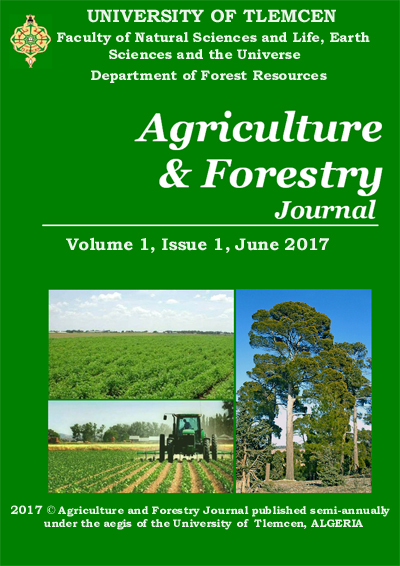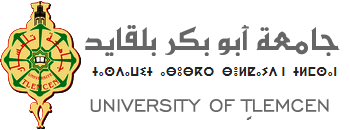Variation of Baobab (Adansonia digitata L.) taproot development and leaf number in Sudan
DOI:
https://doi.org/10.46325/afj.v8i1.154Keywords:
Nursery, indigenous fruit tree, population, root tubers, domestication, NTFPsAbstract
Baobab (Adansonia digitata L.), seedlings produce a strong prominent taproot, which are known to form root tubers. Baobab domestication is imperative to safeguard its sustainable utilization. Nevertheless, little is known about their growth features and its yield potential. Baobab seedlings develop a tuber-like or taproot which can be consumed as a vegetable. The study aimed to investigate the yield potential of baobab root tubers and number of leaves and the assess variation of fruit types on root development in a nursery trial at five locations in Blue Nile, West and North Kordofan state, Sudan. The collected data included shoot length, stem diameter, number of leaves, taproot length, taproot diameter and root length content. One-way ANOVA showed that that there were significant differences (P≤ 0.05) between studied sites on any of the measured plant growth parameters. Seedlings invested mainly into taproot development during the growth period, with root tubers reaching an average length of 8.13±4.96 cm at 126 days after sowing. Seedlings from El Roseires had longer shoot, tuber, root length, larger number of leaves, stem diameter and tuber diameter. Globose and oblong fruit shape, had variable growth larger than those compared to ovate, obovate, crescent shapes and ellipsoid fruit types. Though, the heterogeneity of root tuber growth by way of affected by abiotic and water availability, as well as genetic origin permit additional study.
Keywords : Nursery, indigenous fruit tree, population, root tubers, domestication, NTFPs
References
Assogbadjo A.E., Sinsin B, Codjia JTC, van Damme P., 2005. Ecological diversity and pulp, seed and kernel production of the baobab (Adansonia digitata) in Benin. Belgian Journal of Botany, 138:47–56.
Buchmann C., Prehsler S., Hart l.A. and Vogl C.R., 2010. The Importance of Baobab (Adansonia digitata L.) in Rural West African Subsistence Suggestion of a Cautionary Approach to International Market Export of Baobab Fruits. Ecology of Food and Nutrition, 49 (3): 145–172.
Cuní Sanchez, A., De Smedt S., Haq N., Samson R., 2011. Variation in baobab seedling morphology and its implications for selecting superior planting material. Scientia Horticulturae, 130:109–117.
Dawson I.K., Lengkeek A., Weber J.C., Jamnadass R., 2009. Managing genetic variation in tropical trees: linking knowledge with action in agroforestry ecosystems for improved conservation and enhanced livelihoods. Biodiversity Conservation, 18: 969–986.
De Smedt S. Cunı´ Sanchez A., Van den Bilcke N., Simbo D., Potters G., Samson R., 2012. Functional responses of baobab (Adansonia digitata L.) seedlings to drought conditions: differences between western and southeastern Africa. Environmental and Experimental Biology, 75:181–187.
Dhillion S.S., Gustad G., 2004. Local management practices influence the viability of the baobab (Adansonia digitata Linn.) in different land use types, Cinzana, Mali. Agriculture Ecosystems & Environmentn, 101:85–103.
Di Lucchio L.M., Fensholt R., Markussen B. & Raebild A., 2018. Leaf phenology of thirteen African origins of baobab (Adansonia digitata L.) as influenced by daylength and water availability. Ecology and Evolution, 8: 11261– 11272.
Duvall C.S. 2007. Human settlement and baobab distribution in south-western Mali. Journal of Biogeography, 34: 1947–1961.
Eyog-Matig O., Gaoue O.G., Dossou B., 2002. Reseau “Especes Ligneuses Alimentaires”. Compte Rendu de la Première du Reseau Tenue 11–13 Décembre 2000 au CNSF, Ouagadougou, Burkina Faso. Institut International des Ressources Phylogenetiques, Rome, Italy.
Forestry Outlook Study for Africa, 2001. Sudan country reports, Sudan.
Gebauer J, Luedeling E., 2013. A note on baobab (Adansonia digitata L.) in Kordofan, Sudan. Genetic Resources and Crop Evolution, 60:1587–1596.
Gebauer J., Adam Y.O., Sanchez C.A., Darr D., Eltahir M.E.S., Fadl K.E.M., Fernsebner G., FreiM., Habte T.Y., Hammer K., Hunsche M., Johnson H., Kordofani M., Krawinkel M., Kugler F., Luedeling E., Mahmoud T.E., Maina A., Mithöfer D., Munthali C.R.Y., Noga G., North R., Owino W.O., Prinz K., Rimberia F.K., Saied A., Schüring M., Sennhem A., Späth M.A., Taha M.E.N., Triebel A., Wichern F., Wiehle M., Wrage- Mönnig N. & Kehlenbeck K., 2016. Africa’s wooden elephant: the baobab tree (Adansonia digitata L.) in Sudan and Kenya: a review. Genetic Resources and Crop Evolution, 63: 377–399.
Gebauer J., El-Siddig K. & Ebert G., 2002. Baobab (Adansonia digitata L.): a Review on a Multipurpose Tree with Promising Future in the Sudan. Gartenbauwissenschaft, 67 (4): 155–160.
IFAD., 2003. Evaluating the Agricultural Season in North Kordofan State. Final Report, Records of Ministry of Agriculture and Livestock. North Kordofan State, Sudan, pp 46.
Jama B.A., Mohamed A.M., Mulatya J., Njui A.N., 2008. Comparing the ‘‘big five’’: a framework for the sustainable management of indigenous fruit trees in the dry lands of east and central Africa. Ecological Indicators, (2):170–179.
Jansen L., Darr D., Hansohm N., Gebauer J., Meinhold K., Munthali C.R.Y., Florian Wichern F., 2020. Variation in baobab (Adansonia digitata L.) root tuber development and leaf number among different growth conditions for five provenances in Malawi. Journal of Agriculture and Rural Development in the Tropics and Subtropics, 121 (2); 161–172.
Jenya H., Munthali C.R.Y. and Mhango J., 2016. Amenability of African baobab (Adansonia digitata L.) to vegetative propagation techniques. Journal of Sustainable Forestry, 37 (6): 632–644.
Kaboré D., Sawadogo-Lingani H., Diawara B., Compaoré C.S., Dicko, M.H. & Jakobsen M. 2011., A review of baobab (Adansonia digitata L.) products: Effect of processing techniques, medicinal properties and uses. African Journal of Food Science, 5 (16): 833–844.
Munthali C.R.Y., Chirwa P.W. & Akinnifesi F.K., 2012a, Genetic variation among and within provenances of Adansonia digitata L. (Baobab) in seed germination and seedling growth from selected natural populations in Malawi. Agroforestry Systems, 86 (3).
Parker W.C., Noland T.L., Morneault A.E., 2006. The effects of seed mass on germination, seedling emergence, and early seedling growth of eastern white pine (Pinus strobus L.). New Forests, 32: 33–49.
Sanchez C.A., 2011. The baobab tree in Malawi. Fruits, 66: 405-416.
Sanchez, C.A., Patrick E.O. & Nazmul H. 2011. "Climate Change and the African Baobab (Adansonia digitata L.): The Need for Better Conversation Strategies." African Journal of Ecology 49(2):234-45. Doi:10.1111/j.1365-2028.2011.01257.x
Van Den Bilcke N., De Smedt S., Simbo D.J. & Samson R., 2013. Sap flow and water use in African baobab (Adansonia digitata L.) seedlings in response to drought stress. South African Journal of Botany, 88: 438-446.
Venter S.M. & Witkowski E.T.F., 2013. Where are the young baobabs? Factors affecting regeneration of Adansonia digitata L. in a communally managed region of southern Africa. Journal of Arid Environments, 92: 1-13.
Walters M.B., Kruger E.L., Reich P.B., 1993. Relative growth rate in relation to physiological and morphological traits for northern hardwood tree seedlings species, light environment and ontogenic considerations. Oecologia, 96: 219–231.
Wickens G.E., Lowe P., 2008. The Baobabs: Pachycauls of Africa, Madagascar and Australia. Springer, UK.
Downloads
Published
How to Cite
Issue
Section
License
Copyright (c) 2024 Nasreldin Gurashi, Muneer Eltahir

This work is licensed under a Creative Commons Attribution-NonCommercial 4.0 International License.









